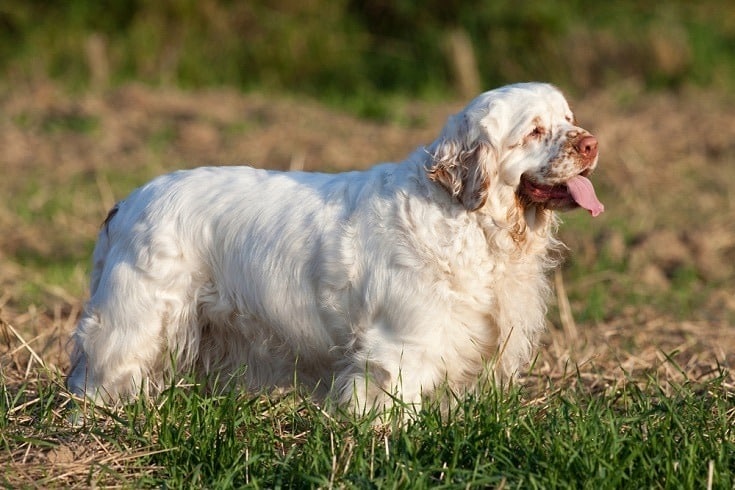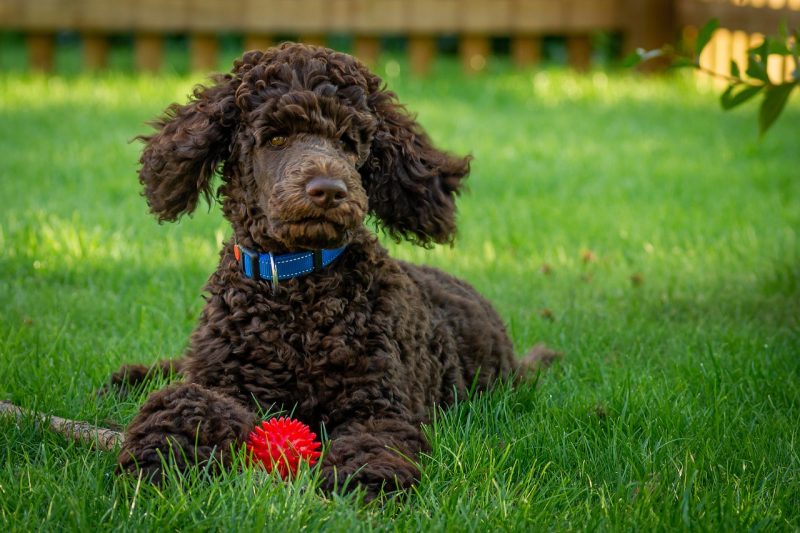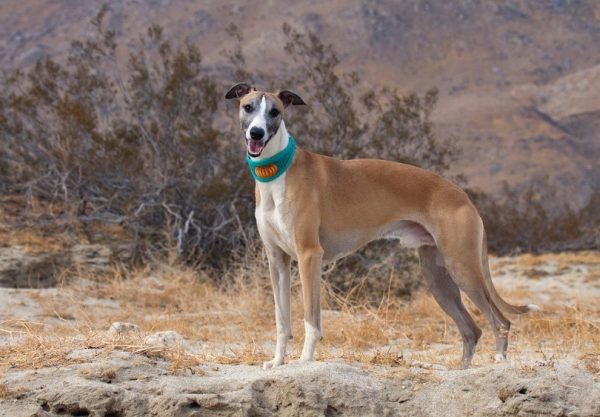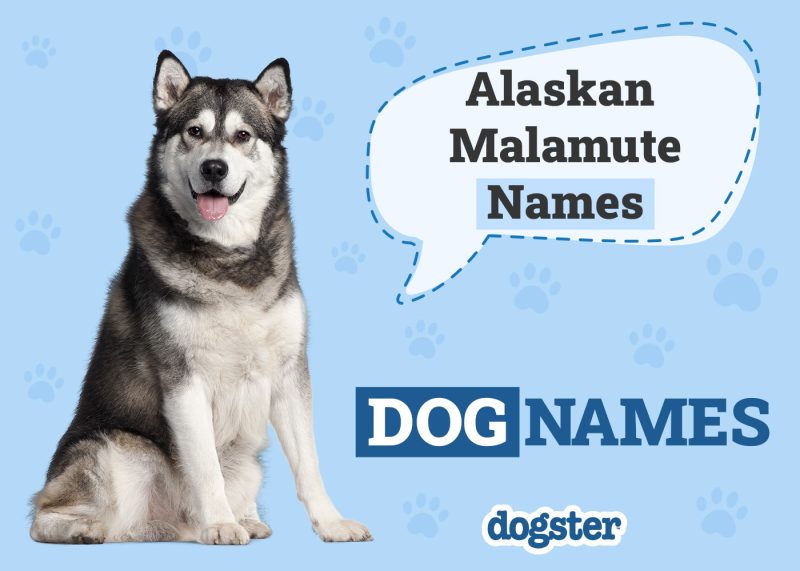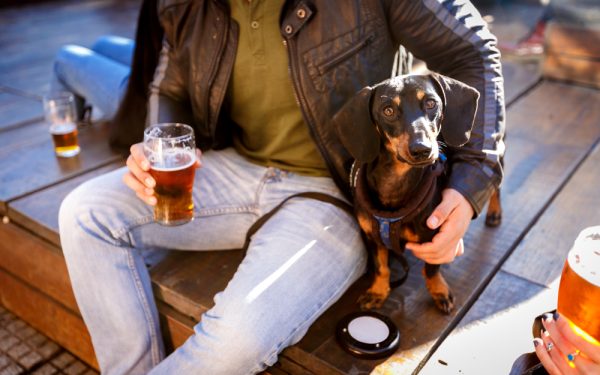In this article
View 8 More +The heavy-boned Clumber Spaniel stands out among hunting dogs, and their unique form and regal bearing capture attention wherever they go. As one of the oldest modern spaniel breeds, they have had plenty of time to develop into the affectionate, easy-going companions families treasure in the home.
The Clumber is the well-mannered yet playful that breed dog lovers from all walks of life dream of owning. If you’re lucky enough to have them on your shortlist of potential breeds, we’ll help you make the best choice with our look at the Clumber Spaniel’s interests, temperament, and traits.
Breed Overview
Height:
17–20 inches
Weight:
55–85 pounds
Lifespan:
10–12 years
Colors:
White, lemon, or orange markings
Suitable for:
Families with children and pets, outdoorsy pet owners, active seniors
Temperament:
Sweet, loyal, loving, entertaining, low-key, dignified, intelligent, adaptable, trainable
The Clumber Spaniel is a white dog with orange or lemon markings appearing across the body, typically around the face and ears. Their notable trait is their heavy structure. Despite being the same height as a Brittany, the Clumber Spaniel can be up to two times their weight due to their massive head and bone structure.
The soft coat and drooping face give them a fittingly relaxed look. As long-time hunting companions for the elite, they bear a gentlemanly, esteemed personality that any owner can appreciate.
Clumber Spaniel Characteristics

Clumber Spaniel Puppies
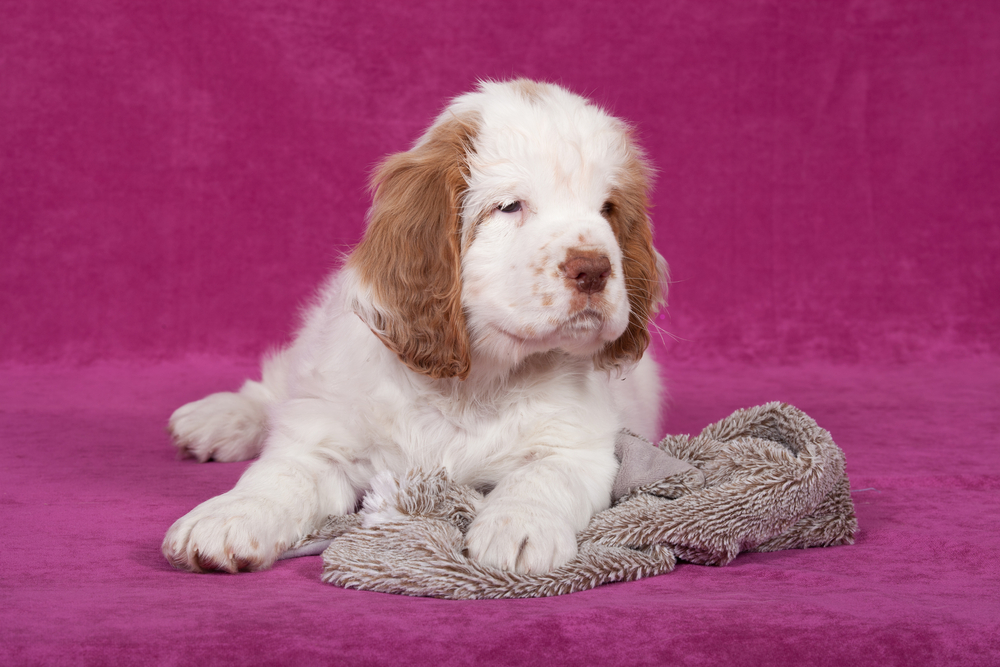
Clumber Spaniels are a relatively rare breed, even in their native England. A hopeful owner can locate a breeder with enough research and dedication, but you can expect a decent amount of traveling and a lengthy wait time once you find one.
The Clumber Spaniel Club of America features breeders by state, and the AKC Marketplace includes a handful of breeders. The former also offers information on locating rescues, though the breed’s rarity makes adoptable dogs harder to find. Checking out dog shows is a great way to acquaint yourself with Clumbers and compare them to other breeds you’re considering for your family.
The puppy phase can last up to 3 years as your dog develops physically and emotionally. Establishing a tone of respect and positive training during this time is crucial. Clumber Spaniels aren’t particularly challenging dogs, but they’re known for their mischief and stubbornness, which need early attention to subdue.
Although they’re well-mannered as adults, they can also be testy and willful with owners who don’t provide consistent guidance or ample attention and enrichment.
Clumber Spaniel Origin & History
Though their origins are a mystery, the known history of the Clumber Spaniel dates to late-18th century England. The second Duke of Newcastle established a kennel in Nottinghamshire at Clumber Park, the inspiration for the dog’s name. The breed became a favorite hunting dog among the aristocracy, particularly in the Dukeries, a district of nobles around Clumber.
Paintings during that time, including the 1788 picture at Clumber Park entitled “The Return from Shooting,” depict dogs that differed little from today’s Clumber Spaniels. A standard evolved early, and the dogs became popular features in the hunt and on the show circuit by the mid-1800s.
The Clumber Spaniel was among the first breeds to gain AKC recognition upon their founding.
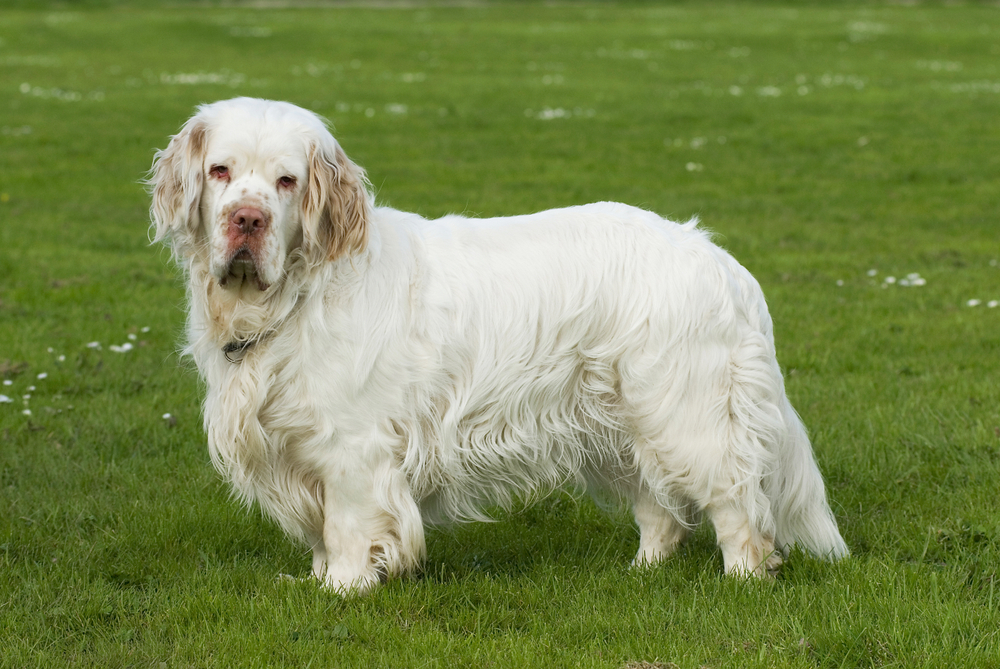

Temperament & Intelligence of the Clumber Spaniel
The Clumber Spaniel is a laid-back and mellow companion animal in the home, a perfect couch potato for anyone who likes to laze around with their dog. They’re bright and trainable, though they can also be testy, mischievous, and independent, often thinking they know better than their owner.
The Clumber personality is an entertaining mix of dignity and humor, with a goofy side that makes their otherwise regal nature all the more endearing. While somewhat weary of strangers, they are a generally outgoing breed accepting of anyone who treats them respectfully.
Are These Dogs Good for Families? 🏡
Clumber Spaniels have the proper temperament for a family. They’re playful, affectionate, and considerate pets that try to keep their people happy. While children run little risk of hurting this sturdy companion, the dog’s hefty build can potentially harm others, especially if they put all their weight on family members lounging on the couch. Dogs and children should play under supervision at all times.
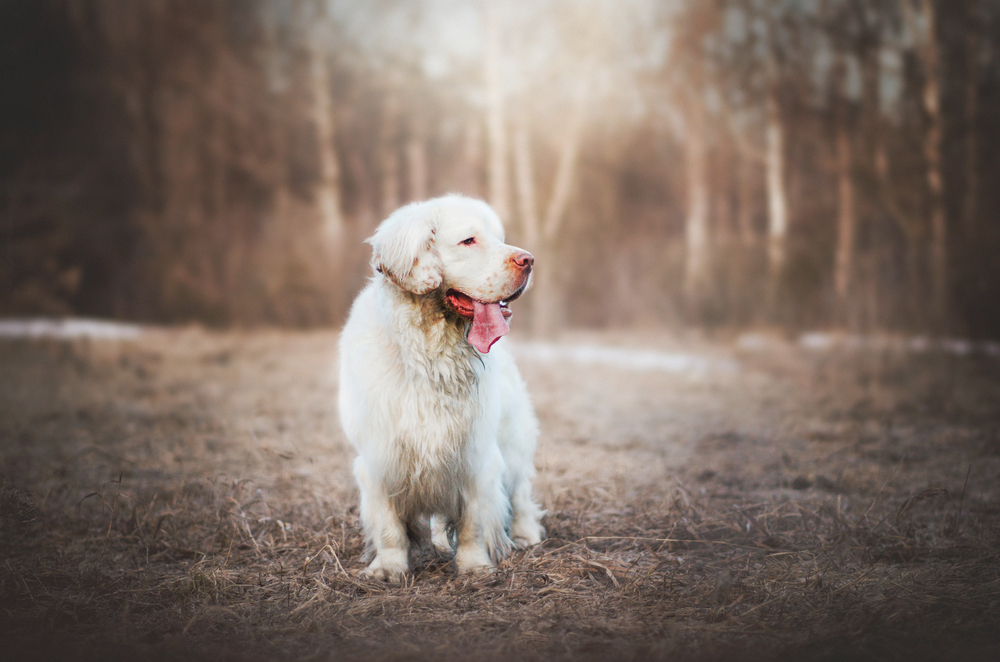
Does This Breed Get Along With Other Pets? 🐶 😽
The Clumber Spaniel is generally good with other dogs and cats in the home. At worst, they may be wary of new dogs upon meeting but will rarely get aggressive. When well-socialized and introduced to other pets properly, your other pets will experience the same calm demeanor that Clumbers show to the rest of the family.

Things to Know When Owning a Clumber Spaniel
Clumber Spaniels are easy to live with if you don’t mind the shedding and drool. Expect an ongoing cleaning task to keep the house hair and slobber-free, and look elsewhere if you need a breed that’s gentle on allergies.
Otherwise, Clumbers are undemanding. While they need more exercise than you might expect, they’re perfectly content loafing around the house. They have mild tempers and aren’t big barkers. Although you won’t want one for a watchdog or guard dog, you’ll appreciate the adaptability if you have nearby neighbors.
Despite this calm manner inside, Clumber Spaniels switch gears once they are outside and have a chance to sniff around. They are determined and eager to please when they have a job. Though they may have a slower gait, they take on the outdoors with impressive stamina and confidence.
Food & Diet Requirements 🦴
The adult Clumber Spaniel will eat about 2–3 cups of large-breed dry dog food daily. They’ll eat more as puppies, typically enjoying an extra meal or two to drive their growth. Clumber Spaniels are highly food-motivated, so treats are an excellent training incentive. Still, it would be best to avoid making them more than 10% of your dog’s daily diet.
Between the potential to overfeed and under-exercise them and their desire to dine whenever possible, it’s easy for Clumbers to overeat. Owners must be careful to keep their dogs away from food on the counter and leftovers on the dinner plate, perhaps even going as far as locking up the pantry to keep them from raiding it.
Exercise 🐕
The Clumber Spaniel’s relaxed behavior around the house can lull you into thinking they don’t need much exercise. As with providing a proper diet, giving them enough of a daily workout is essential in keeping them from becoming overweight and putting stress on their already heavy frame.
Clumbers don’t need strenuous exercise. Giving them about an hour or so of movement is often enough to keep them in shape and avoid bored, destructive behaviors like chewing. An ample walk with time to sniff around will satisfy their body and mind. To work out their natural retriever traits, they love a good game of fetch in the backyard and usually enjoy a swim whenever possible.
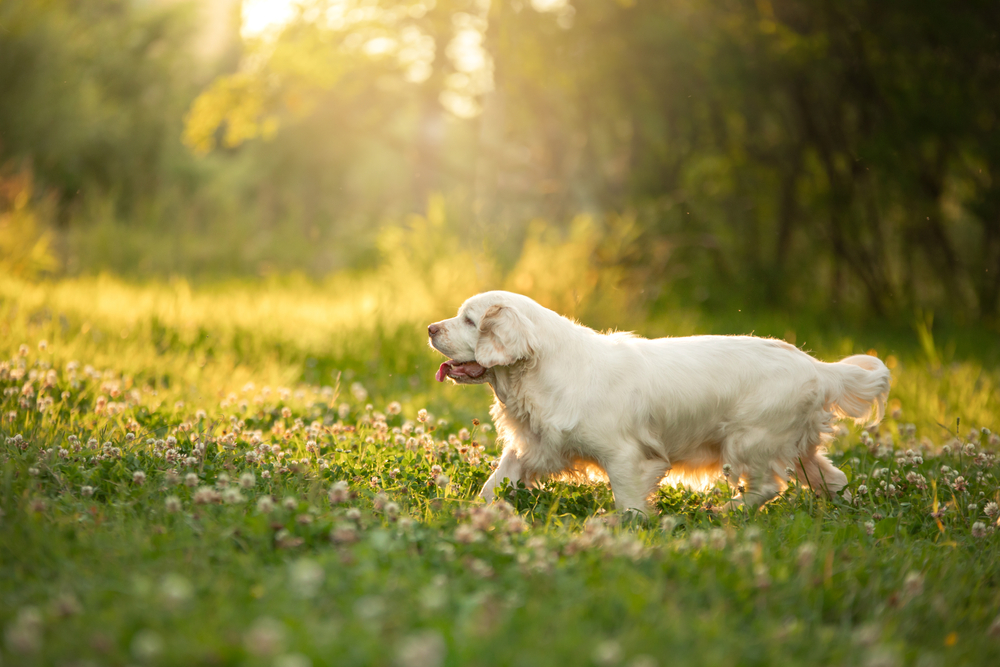
Training 🦮
Clumber Spaniels are intelligent and easy to train. They learn quickly and retain lessons well, but their stubbornness demands consistency and patience. While they won’t challenge your dominance, they’ll have ideas on the best way to do things.
Obedience can be sketchy when they don’t see enough incentive to follow your command. Plus, their scent sensitivity can make them easily distracted. Along with the training challenges that presents, it emphasizes the need for developing leash manners and a reliable recall if you hope to take them off-lead.
Training and socialization are critical from your first day with your Clumber Spaniel. Puppy classes are an excellent idea. It’s best to be consistent and firm when needed while applying a gentle touch and focusing on positive reinforcement. Clumber Spaniels are most cooperative when you show patience, keep training interesting and challenging, and incentivize them with tasty treats.
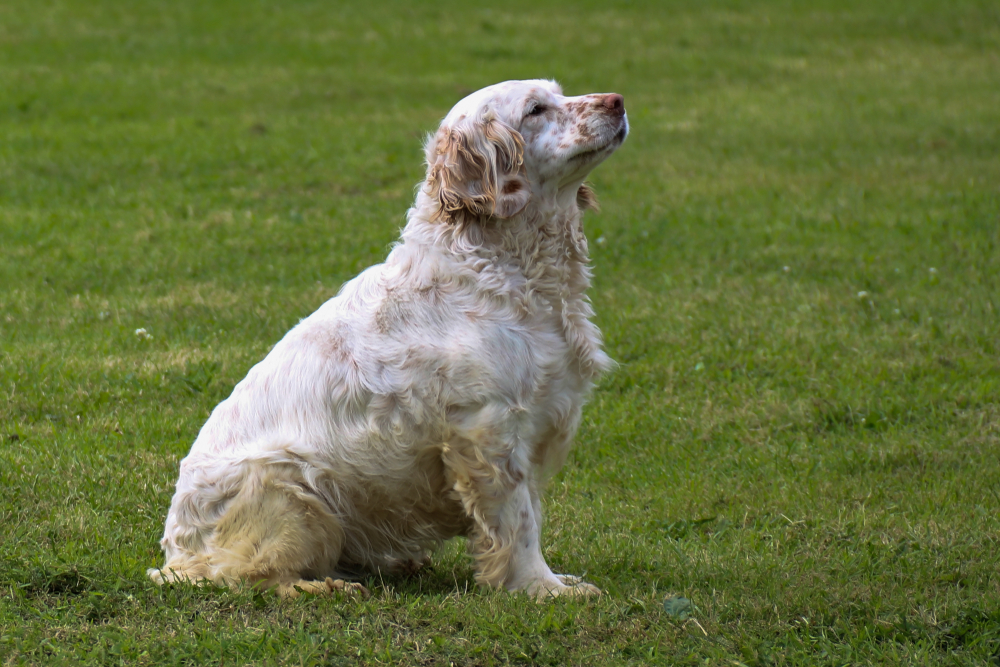
Grooming ✂️
Clumber Spaniels are not for owners who prides themselves on their tidy home. Wisps of conspicuous white hairs will litter the room throughout most of the year, and where there aren’t remains of a shedding coat, there will be drops of dog saliva.
Clumbers aren’t the cleanest dogs, either. The low body paired with the sweeping coat draws dirt and debris that stick out like a sore thumb against the white hair, increasing the need for more frequent baths.
Clumber Spaniels require brushing at least twice weekly to minimize mats and loosened hair, with occasional trimmings occurring as needed. You should also check and clean the eyes and ears weekly and brush their teeth at least once every 1–2 days.
Dental chews can satisfy your Clumber’s desire to gnaw and maintain clean teeth. To keep your dog comfortable, keep their nails short, clipping them every 3–4 weeks.
Health and Conditions ❤️
Clumber Spaniels are not the healthiest breed and suffer from several ailments due to their body structure. Orthopedic issues are common, including hip dysplasia, elbow dysplasia, and intervertebral disc disease. Exercise and daily actions like jumping shouldn’t be overly stressful, as they can exacerbate these issues. Eye problems like entropion and ectropion are also more frequent in this breed.
Exercise intolerance affects Clumbers in unique ways. The breed is more susceptible to inherited issues, such as exercise-induced collapse and pyruvate dehydrogenase phosphatase 1 deficiency, causing severe exhaustion after limited activity.
Owners of affected dogs must be cautious with the intensity of their workouts and reduce triggers in their environment that can engage the dog’s drive. Fortunately, Clumber breeders engage in thorough genetic testing to reduce the prevalence of these rare disorders.
- Allergies
- Ear infections
- Eye disorders (e.g., ectropion, entropion)
- Hip and elbow dysplasia
- Intervertebral disc disease
- Hypothyroidism
- Pyruvate dehydrogenase phosphatase 1 deficiency
- Obesity

Male vs Female
Beyond a few physical features, male and female Clumber Spaniels are fairly similar. Males stand a few inches taller and weigh up to 15 pounds more. Their coat is also thicker around the belly, rear, and ruff.
Personality-wise, both sexes are friendly and laid back, and neither is aggressive with dogs of the same sex.

3 Little-Known Facts About the Clumber Spaniel
1. Clumber Spaniels Are Also Called the “Retired Gentleman’s” Spaniel
Due to the Clumber Spaniel’s deliberately moderate pace, they’ve gained an association with older and slower-moving hunters. Regardless, enthusiasts proudly assert these masterful hunters are a practical choice for hunting enthusiasts of all ages.
2. Clumber Spaniels Were Unique Bird-Hunting Experts
The Clumber Spaniel’s slow, determined gait was designed less for elderly hunters and more for the dog’s specific hunting arena. Clumbers work in thick brush and wooded, thorny cover while they search for birds to flush.
Their low-to-the-ground, thick-coated, and heavy-boned bodies let them push through the densest bushes to find their prey, and the white coat keeps them visible to their handler at all times. Meanwhile, their powerful nose directed them toward the far-away game.
The Clumber hunts methodically. Although they’re slower than other gundogs, their scenting skills and natural approach also result in fewer passed birds. Once they locate the game, they hesitate to flush the bird to give the hunter time to set up their shot.
Hunting traits like their quiet, measured approach and scenting ability add to their at-home personality, giving us the mild, low-barking, and nose-driven dog we love as pets.
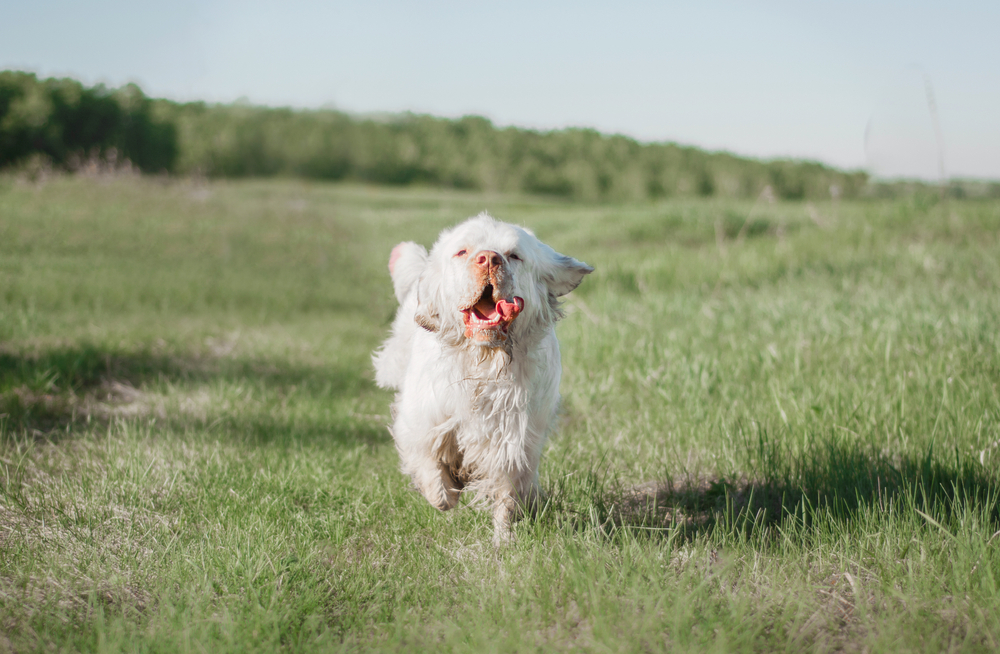
3. Clumber Spaniels Excel in the Field and Conformation
One of the best aspects of the Clumber Spaniel is how one dog can excel in the field and show. Due to the dog’s particular hunting style, they haven’t changed much since the 1700s. Today, many Clumbers transition effortlessly from upland hunting to the conformation ring.
A Clumber took home the Best in Show title at the 120th Westminster Kennel Club Dog Show in 1996. Despite the dog’s knack for winning titles, enthusiasts largely resist the idea of establishing divergent “show” and “hunting” lines.

Final Thoughts
Clumber Spaniels combine character, charisma, and class in an inimitable companion breed. Though they can bring some frustration due to their stubbornness, there’s rarely any worry over their manner with others. If you provide the attention and patient training they demand, they’ll supply the entire family with endless entertainment and joy.
See Also:
- What Is a Barn Hunt for Dogs? Vet-Verified Info & FAQ
- How to Bike With Your Dog: Vet-Reviewed Do’s, Don’ts & FAQ
Featured Image Credit: Lenkadan, Shutterstock
